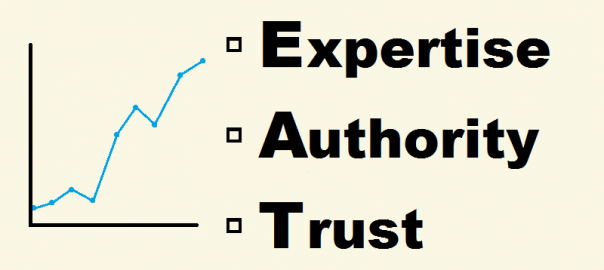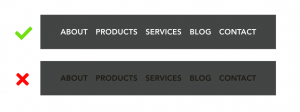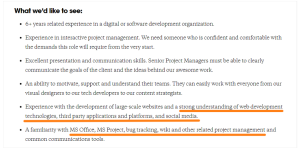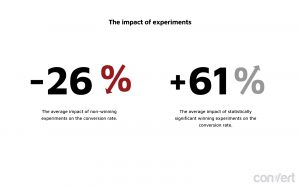You need to eat to live. And so does your website content. A different kind of “eat,” but the idea is the same.
That’s right, we’re talking about E-A-T. We first saw this acronym when Google’s Search Quality Guidelines got leaked in 2014. But with Google’s official release, we now know just how important E-A-T really is. This year, E-A-T is set to be a huge deal.
Google states that E-A-T is among the top 3 considerations for Page Quality. So if you haven’t been paying attention to E-A-T content before, you should start doing so. Immediately.
What Does “E-A-T” Stand For?
E-A-T stands for “Expertise, Authoritativeness, Trustworthiness.”
You should always keep E-A-T in mind when building content on a webpage or website. But it’s kind of a mouthful, isn’t it? Let’s simplify it and make it easier to remember.
“Expert” – You need to be an expert in your field. This means you need to show you have the appropriate credentials (college degree, job experience, etc.) and mention it in your content. Expertise is less important for humor or gossip websites, but it’s vital for medical, financial, or legal websites. The good news is any site can show expertise if the content is truthful and useful for users.
“Authority” – You need to show that you are an authority. And you can get this from the expertise of your writers. If your page is a community or forum discussion, the quality of the conversation drives authority. Credentials are important, but so are personal experiences like reviews.
“Trust” – You need to show users they can trust the page they are on. This is especially important for eCommerce websites that ask users for their credit card information. Everything about your site should make users feel safe while they’re visiting.

Why is E-A-T So Important for Your Web Pages?
So why is having expertise, authority, and trust so important? After all, the Google quality rater guidelines don’t actually determine a page’s rankings.
Essentially, E-A-T determines a website’s value. Quality raters keep E-A-T in mind when judging how good a site or page provides what they need. They look to see if they’re getting a good online experience and if the content meets their standards. If the raters feel like a user would feel comfortable reading, sharing, and recommending the content, that earns the site a high level of E-A-T.
Think of E-A-T as the reason why users would choose your site over your competition’s. Because it could have a direct impact on how Google receives — and ultimately ranks — your website.
The Relationship Between E-A-T and “Your Money or Your Life”
So how does E-A-T actually affect visitors to your site?
E-A-T is closely related to what Google calls “Your Money or Your Life” (YMYL) pages. YMYL pages are those that have topics on medical advice, legal advice, financial advice, that sort of thing. Basically anything that could positively or negatively affect a user’s happiness, health, and wealth. Examples include:
- An online store asking for your credit card info
- A mommy blog giving parenting advice
- A financial institution blog offering legal advice
- A medical health page listing symptoms for a rare disease
High-ranking YMYL pages will show a high level of E-A-T. That’s because the safer a user feels while visiting a page, and the more the content meets their search query, the more it will meet the needs of E-A-T. Sites that are genuinely offering helpful advice or a solution to a problem will meet these needs more readily than sites that try to game Google’s system.
You Are What You E-A-T
So your site will only be as effective as what you put into it. Since E-A-T is considered on both the page-level and site-level, you really need to make sure each and every part of your website is trying to meet Google’s requirements. And if your pages qualify as YMYL pages, this is even more important.
But don’t just take our word for it. Google says that a page or site found lacking in E-A-T is a “sufficient reason to give a page a Low quality rating.” So if you aren’t an expert, an authority, or trustworthy, your site page could be considered low quality.
You have to craft engaging, useful, and truthful content. And you have to use E-A-T to meet the needs of both quality raters and actual users. Do that, and you’re doing exactly what Google wants.
Be sure to keep this page bookmarked – you never know when you may need a reminder to E-A-T right.
Digital & Social Articles on Business 2 Community(51)
Report Post







